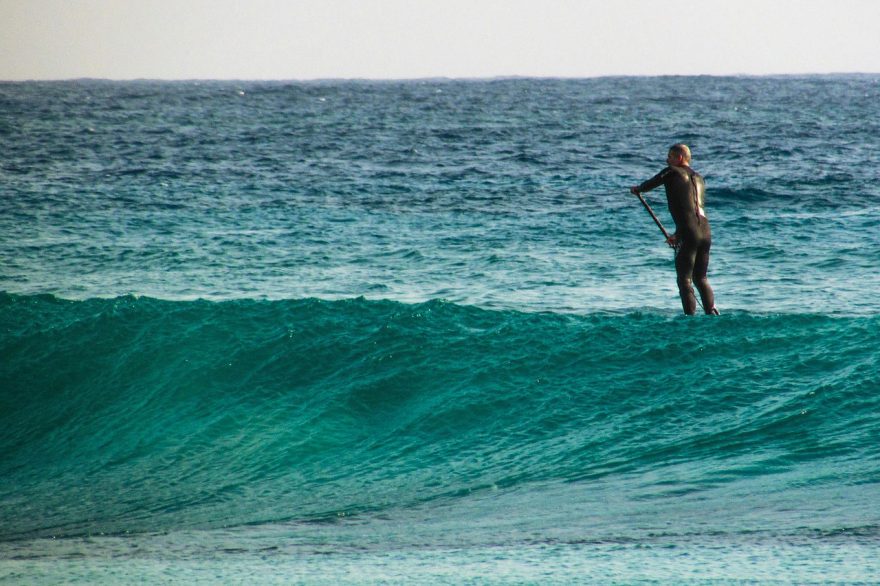
If you haven’t yet nailed surfing, or even if you have, SUP surfing might not be easy but it is fun. It is as it sounds, riding the wave on a SUP, rather than a traditional surfboard. SUP surfing offers an interesting dynamic to paddle boarding, making it more challenging and thrilling.
Of course, having experience with the balance required for board sports (wakeboarding, surfing, snowboarding) will put you at an advantage, you’ll need to some more practice than just that when it comes to SUP surfing.
The Correct Board
Not every board is suitable for surfing, so to get you off to a head start, you should pick one which will make it as easy for you as possible. If you’re a complete beginner, then it is best to start off on a 10-footer.
Some of the pros will have much smaller boards and make it look incredibly easy – don’t be fooled! Aim to use a long, buoyant, and stable board with a decent rocker. It can be easy for the nose to dip and catch the water if it doesn’t have much of a rocker on it.
Choosing the Waves
It’s a wise idea for total beginners to stay in the white water. Anything more than this if you’re not used to it and you’ll quickly get chucked around and it will become frustrating. An area where the waves are breaking will allow you to take your time and not get thrown in at the deep end, literally.
To get out there, walk your board until you’re about waist deep. Then, hop on the board and paddle on your knees or even lying down. If you want to paddle standing up, make sure to have plenty flex in the knees so that you can absorb the waves as they hit you.
You’ll soon find out when you’re getting started that spotting the wave and then turning your board in time to catch it can be really challenging. There are a few ways you can speedily rotate the board. One of the most efficient (but challenging) ways to do so is to put your weight on the back of the board, lifting the front up slightly, and use the paddle to help you pivot.
Riding it Out
Since you’re already standing up, you can easily be caught off guard when the wave hits. This leads to many people being chucked backward off the board. When you feel your board catching the wave, try to jump into your regular surf stance as soon as you can. You can use the paddle to help you balance easier and turn.
Just like learning to surf normally, it takes some time to find the balance and get used to how a larger board responds to the waves. Take a step-by-step approach and gradually build up to more challenging waves once you have found your feet.
 Your Privacy Choices
Your Privacy Choices
 The
The